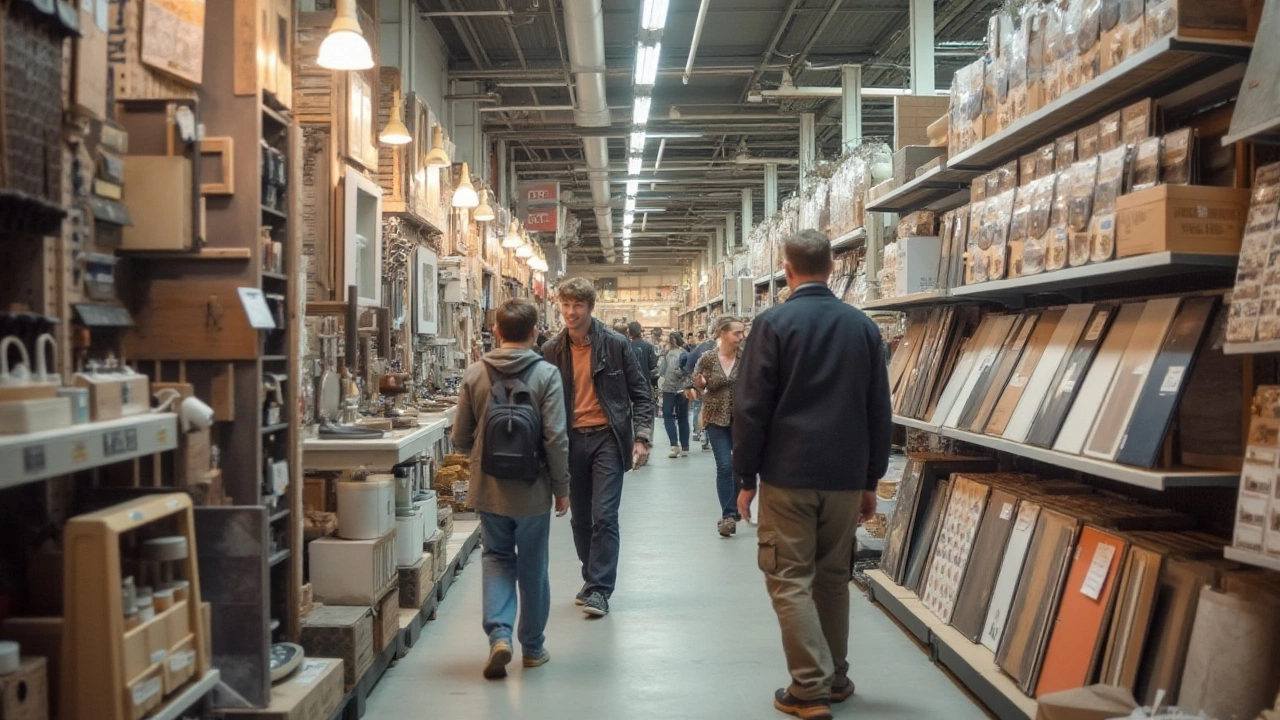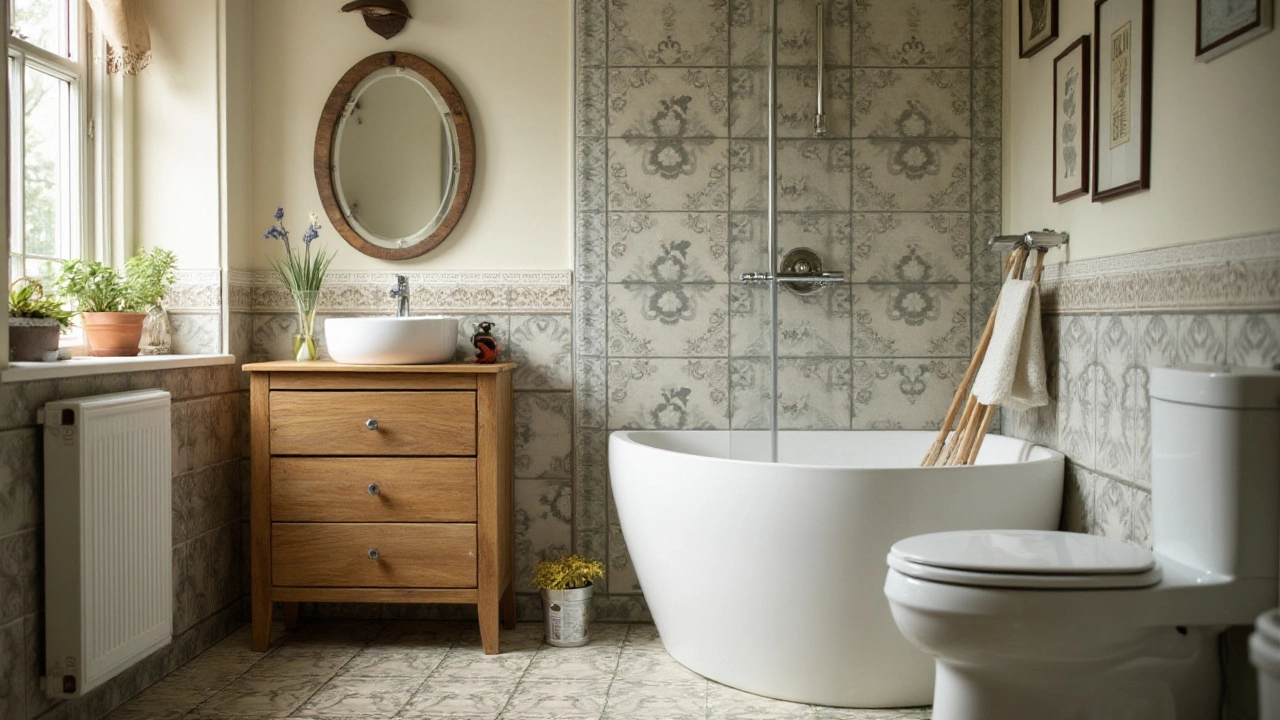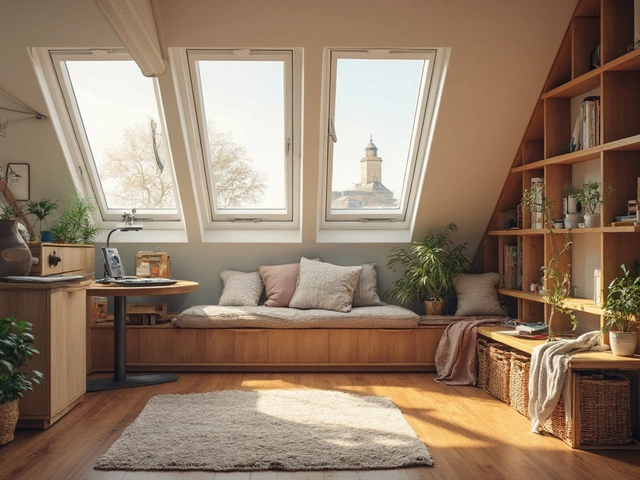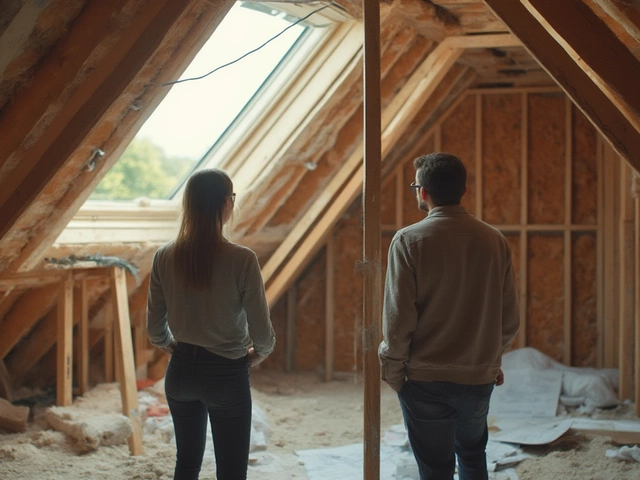Renovating a bathroom can often feel like a daunting financial hurdle, but with the right approach, it can be both affordable and rewarding. By setting a clear and realistic budget, you can lay the groundwork for a successful renovation without unnecessary stress. Start by identifying the essential upgrades that will make the most significant impact.
Choosing materials wisely is another crucial step. Opt for cost-effective options that do not sacrifice style or quality. Furthermore, tapping into your DIY skills can significantly reduce labor costs, making room in your budget for splurges on elements that matter most to you.
Saving money doesn't have to mean skimping on quality. By incorporating energy-efficient fixtures, not only do you reduce utility bills, but you also contribute to a more sustainable home environment. Finally, when hiring professionals for complex tasks, ensure that you choose vetted and reliable experts who fit within your financial plan.
- Setting a Realistic Budget
- Prioritizing Key Upgrades
- Choosing Cost-Effective Materials
- DIY Renovation Ideas
- Energy-Efficient Fixtures
- Hiring the Right Professionals
Setting a Realistic Budget
Embarking on a bathroom renovation journey starts with the pivotal task of setting a realistic budget. This first step may seem mundane, but it is the cornerstone of the entire project. Without a doubt, understanding the financial boundaries can save you from future headaches and disappointments. Begin by examining your finances to establish what you can comfortably afford to spend. While it's tempting to dream about a spa-like oasis, it's crucial to match that dream against what your bank account says is possible. Taking stock of your existing funds, considering savings, or looking into financing options are the initial gears that need turning.
Once you have a solid grasp on your financial starting point, it’s time to delve into research. This is where you gather insights into typical renovation costs. You might be surprised to find out that in 2024, the national average for a mid-range bathroom remodel is around $20,000 according to Remodeling Magazine’s Cost vs. Value Report. However, costs can vary dramatically based on location, bathroom size, and the extent of the remodel. Whether you're looking at a complete overhaul or just a facelift, knowing the typical expenses can help you tailor your budget effectively.
With an understanding of costs, the next step is to prioritize your needs versus wants. It’s essential to differentiate between what you need to address immediately, like plumbing issues or outdated fixtures, and cosmetic changes that can be postponed. Consider making a list, dividing it into 'must-haves' and 'nice-to-haves,' to focus your spending wisely. For instance, while luxury tiles might seem appealing, upgrading your toilet to a water-saving model might provide long-term savings and should take precedence.
As you plan your cash flow, don’t ignore the importance of a buffer in your budget. Experts often suggest allocating an additional 10-15% of your total budget to account for unexpected expenses. Renowned home renovation expert Bob Vila once said,
“Renovations will cost more and take longer than you expect, so always have a contingency fund.”Anticipating these financial surprises can prevent panic when the inevitable hiccup occurs.
Finally, as you finalize your renovation budget, get detailed quotes from multiple contractors. Ensure each quote includes a breakdown of materials, labor, and any additional costs so there are no hidden surprises. Comparing these estimates alongside your pre-researched figures provides a clear picture of what you can achieve within your financial limits. This diligence lays the groundwork for a successful and cost-effective renovation, keeping your dream bathroom both realistic and attainable.
Prioritizing Key Upgrades
When embarking on a bathroom renovation, understanding where to allocate your resources can make all the difference. Not every aspect of the bathroom needs top-tier investment to create a significant transformation. Start by focusing on the foundational elements that are most likely to shape the overall experience and functionality of the space. Evaluating what currently works in your bathroom and what feels outdated or inconvenient is a smart first step.
Moving to fixtures, replacing an old, inefficient toilet or an unreliable showerhead can make a considerable impact not only on your comfort but also on water usage. Modern toilets and showerheads are designed to conserve water, which can translate to savings on bills over time. For example, according to a report by the Environmental Protection Agency, switching to a WaterSense labeled toilet can save the average family about $110 per year on their water bills.
Another important upgrade to consider is the lighting. Bathrooms often suffer from poor lighting that doesn't serve the practical needs for grooming or ambiance. Choose energy-efficient LED lighting with adjustable brightness to improve both aesthetics and energy consumption. The right choice of lighting can enhance the appearance of space and make it feel more inviting, often at a relatively low cost.
Cabinets and storage solutions are another area where focusing your resources wisely can pay off. Enhancing storage does not mean a complete overhaul; upgrading and re-facing existing cabinetry can breathe new life into your bathroom design without the heavy price tag of replacing cabinets entirely. If you’re handy with tools, this might even be a project you take on yourself to save even more.
Even minor upgrades like changing handles, faucets, or mirror frames can provide a luxurious feel without major spending. Such details might seem minor, but they contribute to a cohesive and polished look when thoughtfully executed.
"The smallest details can often be the key to a successful design. Always think about the functional and aesthetic impact of every change you make," says design expert Amanda Talbot.
Don't forget about the walls and flooring. A fresh coat of paint in a modern or soothing color can reinvigorate the entire bathroom without requiring extensive labor or expense. Similarly, when choosing flooring, consider durable and water-resistant materials like vinyl, which can be both stylish and budget-friendly.
Finally, involving a professional can be beneficial when you're uncertain about the value or functionality of certain upgrades. Getting a contractor's estimate or designer's perspective can help ensure your resources are used wisely and your renovation goals are met. Setting priorities is about making informed choices that add value to your space without exceeding the limits of your intended budget. These thoughtful upgrades will not only enhance your bathroom’s appeal but also its functionality for everyday use.

Choosing Cost-Effective Materials
Embarking on a bathroom renovation project often stirs both excitement and apprehension. Amidst the anticipation of a fresh, stylish space lies the concern over rising costs. However, by selecting cost-effective materials, you can achieve a beautiful outcome without straining your finances. A strategic approach begins with understanding which materials offer the best balance of durability, aesthetic appeal, and affordability.
For flooring, consider alternatives like vinyl or ceramic tiles instead of pricier options like hardwood. Vinyl has evolved tremendously in recent years, offering styles that mimic more expensive materials such as stone or wood while being highly resistant to water, a crucial factor in bathroom settings. Additionally, ceramic tiles are not only budget-friendly but also come in an array of colors and patterns, allowing personalized touches at a lower cost.
When you turn your attention to countertops, laminate surfaces provide an excellent value proposition. Modern laminate designs can closely resemble granite or quartz at a fraction of the price, enabling you to invest in other aspects of your renovation. If you prefer the luxurious look of stone, consider remnant pieces from local suppliers. These remnants are leftovers from larger projects and are typically offered at reduced prices, making them perfect for smaller spaces like bathrooms.
Cabinetry also presents opportunities for savings. Instead of opting for custom cabinets, look to stock cabinets from large home improvement stores. These are mass-produced and often cost significantly less while still offering a range of styles and finishes to match your vision. A fresh coat of paint and new hardware can also transform existing cabinets into something that feels brand-new without the associated costs. Investing in quality handles and knobs can elevate the entire look of your bathroom renovation with minimal expenditure.
In addition to these considerations, some savvy renovators have found profound success through strategic salvage. Reclaimed wood or fixtures from resale shops can introduce character and authenticity to a space. Not only do these options contribute to a unique atmosphere, but they also typically come at a reduced cost compared to brand-new items. Incorporating such elements introduces an eco-friendly approach to your renovation, which is now more critical than ever.
"The best way to save money is to do it once and do it right," advises renovation expert Amber Thomas.
"Opt for durable and practical materials. Doing so means fewer repairs and replacements later, which translates to long-term savings."This quote encapsulates the essence of choosing smart materials: a blend of thriftiness and foresight that ensures your renovation is both cost-effective and lasting. By approaching your material choices thoughtfully, you can experience the joys of a transformed space without financial regret.
DIY Renovation Ideas
Embracing DIY skills during a bathroom renovation can be both a cost-saving measure and a deeply satisfying endeavor. Many homeowners find that tackling certain renovation tasks themselves not only preserves their budget but also provides a personal touch that can make a space feel truly unique. By focusing on manageable projects, homeowners can often produce professional-looking results. For instance, repainting the walls is a task that can dramatically refresh the bathroom's appearance. Choose moisture-resistant paints specifically designed for bathrooms to prevent mold growth and ensure longevity. Always start by prepping the surfaces well, filling any cracks and sanding where necessary to achieve a smooth finish for your new layer of paint.
Another highly rewarding DIY task is the installation of a new backsplash. A simple change like this can add character and depth to your bathroom. You can find peel-and-stick tiles that are cost-effective and easy to install, eliminating the need for grout and messy mortar. These tiles come in a variety of colors and patterns, allowing for creative expression without the hefty price tag of traditional tiles. As a bonus, their application doesn’t require any specialized tools, just a steady hand and a keen eye for alignment.
When it comes to updating fixtures, replacing or updating cabinet hardware is a small yet effective way to make a noticeable difference in your bathroom. New knobs or pulls can be easily swapped out with minimal tools. For those who want to go further, consider repainting the cabinetry itself. Use chalk paint for a no-prep option or go for a durable acrylic paint if you're willing to do a bit more sanding and priming.
"If you are thinking about embarking on a DIY bathroom renovation, start small. Swapping out fixtures or even adding a fresh coat of paint can build your confidence for more complex projects," advises home improvement expert Bob Vila.
For those with basic plumbing skills, upgrading your faucet or showerhead can be a great project that saves on labor costs. Modern low-flow options not only give your bathroom a fresh look, but they also help conserve water, leading to savings on utility bills. Always make sure to follow the manufacturer's instructions to avoid any leaks or mishaps.
One often overlooked aspect of DIY bathroom renovation is lighting. Updating light fixtures can redefine the ambiance of the room. Consider swapping outdated fixtures for more efficient LED options or adding sconces on either side of the mirror to create a balanced, flattering light. Take time to understand the electrical aspects if undertaking this alone; otherwise, consult with a professional for safety.
For homeowners interested in data and planning, reviewing a budget chart before starting is crucial. Consider allocating percentages similar to the table below, which showcases typical budget allocations:
| Renovation Task | Typical Budget Allocation (%) |
|---|---|
| Paint and Wallpaper | 5-10% |
| Tiles and Flooring | 10-15% |
| Fixtures and Faucets | 20-25% |
| Lighting | 5-10% |
Lastly, don't underestimate the power of decor. Simple additions like new towels, plants, or artwork can bring your bathroom to life without the need for drastic changes. Sometimes, a little creativity and elbow grease can turn a bland bathroom into your personal oasis, proving that you don't have to spend a fortune to enjoy a fabulous makeover.

Energy-Efficient Fixtures
In the quest to save money and contribute to a greener planet, incorporating energy-efficient fixtures in your bathroom renovation is a wise choice. These fixtures not only help reduce utility bills, but they also enhance the environmental sustainability of your home. Investing in water-saving toilets and faucets, LED lighting, and efficient showerheads can drastically cut down on water and energy consumption. With water shortages becoming increasingly common in various regions, these changes are more pertinent than ever.
Water-saving toilets, for instance, utilize a dual flush system, offering the choice between a full or half flush. This can save a household thousands of gallons of water each year. An average toilet uses about 3.6 gallons per flush, while a water-efficient model can use as little as 1.28 gallons per flush. The savings, over time, can be significant. Similarly, modern low-flow showerheads use technology to provide strong water pressure while minimizing the volume of water used. This technological advancement means enjoying a vigorous shower without the guilt of waste.
Lighting is another important element in achieving an energy-efficient bathroom. Replacing traditional incandescent bulbs with LEDs can significantly lower electricity usage. LEDs consume about 75% less energy and last about 25 times longer than traditional bulbs. This means fewer replacements and reduced waste, easing the load on both your wallet and the environment. To take your bathroom's sustainability even further, consider installing occupancy sensors or dimmer switches that adjust lighting levels based on room occupancy. This not only prolongs the lifespan of your bulbs but also reduces electricity consumption, further increasing cost savings.
Beyond reducing bills, energy-efficient fixtures can also add value to your home. Buyers are increasingly looking for homes that are both cost-effective to run and environmentally sound. "Choosing energy-saving appliances and fixtures is one of the simplest ways to lower household expenses," says Sarah Collins, a home sustainability expert.
"Homeowners see not only a return on investment through lower utility bills but also enjoy improved property value,"she adds.
Table below demonstrates the potential savings with energy-efficient fixtures:
| Fixture | Traditional Usage | Efficient Usage | Potential Savings |
|---|---|---|---|
| Toilet (per flush) | 3.6 gallons | 1.28 gallons | 3,000 gallons/year |
| Showerhead (per minute) | 2.5 gallons | 1.5 gallons | 2,700 gallons/year |
| Lighting (per bulb) | 60 watts | 9 watts | Up to $8/year |
By choosing the right mix of energy-efficient fixtures, you make an effective contribution to a sustainable future. It is both a practical and environmentally friendly approach that marries functionality with responsible living. While the initial cost may seem daunting, the long-term economic and ecological benefits are undeniable. Taking small steps today creates a ripple effect that can lead to substantial change over time, making it a rewarding investment in every sense.
Hiring the Right Professionals
When embarking on a bathroom renovation, hiring the right professionals can make all the difference between a seamless process and a nightmare ordeal. It's crucial to start by evaluating exactly what kind of work your remodeling project will entail. Are you looking for a general contractor who can oversee the entire venture, or do you need specialists like plumbers and electricians for specific tasks? Understanding the scope of your project will guide you in deciding whom to hire.
A prudent first step is seeking referrals from friends or family who have undergone similar projects, as they can provide genuine feedback on their experiences. Ratings and reviews on contractor platforms can supplement this. Once you have a shortlist, conduct interviews to discuss their experience, approach to unforeseen issues, and how they handle timelines. Importantly, always ensure that professionals have the necessary licenses and insurance to shield you from potential liabilities. According to the National Association of the Remodeling Industry, "Homeowners should always request a comprehensive written contract before work begins, which should detail costs, tasks, and other fundamental terms."
Focus on establishing clear communication from the onset. Discuss your vision in detail and make sure there is a shared understanding. Flexibility from both ends can often lead to unexpected but delightful results. Yet, it's essential to keep a keen eye on the budget. While professionals may suggest materials or design elements promising superior results, always weigh these against your financial constraints and do not shy away from “value engineering” where it's feasible without significant compromise on quality.
Another aspect to consider is the scheduling of your renovation. The availability of professionals can vary greatly, especially during peak seasons. Discuss timing openly to ensure that your project doesn't face unnecessary delays. Moreover, some professionals may offer discounts during off-peak periods, and aligning your schedule accordingly may save you a substantial amount in costs.
Finally, manage your expectations realistically. While professionals bring in expertise, unexpected challenges can arise during renovations due to factors hidden beneath the surface like plumbing or structural issues. A reputable professional will navigate these issues with skill, but it's advisable to maintain a contingency budget to cover any unplanned expenses. Hiring experienced and skilled workers not only assures quality but can also save money in the long term. As the saying goes, "You get what you pay for," so investing in the right professionals is worth the extra time and effort it might take to find them.





